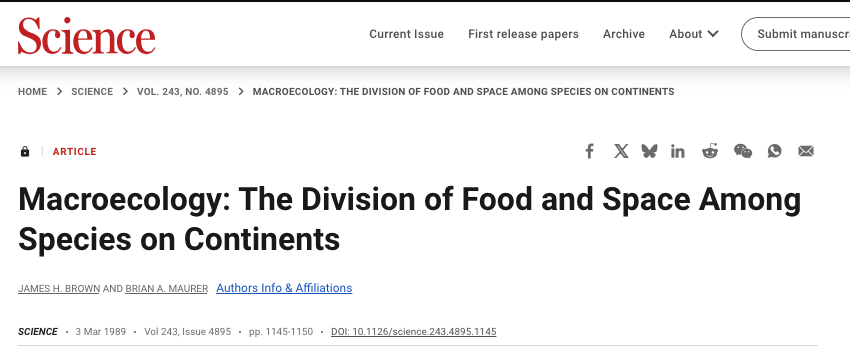
Sara Gamboa
@Paleobicha
Followers
1K
Following
40K
Media
201
Statuses
7K
Palaeontologist doing Ecology. Postdoc researcher at @MAPASLab at @uvigo. Member of @_PMMV_ and @MujerPiesTierra. Comisión Igualdad @_AEET_ .
Vigo, Pontevedra, Spain
Joined October 2011
Hilo de hilos en los que hablo de fósiles con nombres curiosos 🧵🧵🧵.
1
25
41
RT @NC_Renic: Don’t write for fame or money. Write because you agreed to a deadline, forgot the deadline, and just remembered the deadline.
0
293
0
RT @NC_Renic: Adulthood is just saying, "next month should be less hectic" over and over until you die.
0
319
0
Read the full paper here, open access:.🔗 By Sara Gamboa, Sofía Galván, @Mar_Sobral_ , @hdezfdez & @_Sara_Varela . 📊 Over 3600 mammal species.🌍 10 global biomes.🍽️ A global buffet. #Macroecology #FunctionalEcology #Mammals #TrophicEcology.
nsojournals.onlinelibrary.wiley.com
Understanding how species' ecological partitioning functions across biomes is fundamental to macroecology and conservation biology. Here, we examine the global distribution of dietary strategies in...
0
4
5
In our new paper, we asked:. Who eats what — and where — across the world’s biomes?.How does being a specialist or a generalist affect that?.And what that means for biodiversity?.🔍🦓🌍.👉
nsojournals.onlinelibrary.wiley.com
Understanding how species' ecological partitioning functions across biomes is fundamental to macroecology and conservation biology. Here, we examine the global distribution of dietary strategies in...
1
4
4
RT @hdezfdez: The division of food space among mammalian species on biomes.by @Paleobicha et al. .
0
12
0



